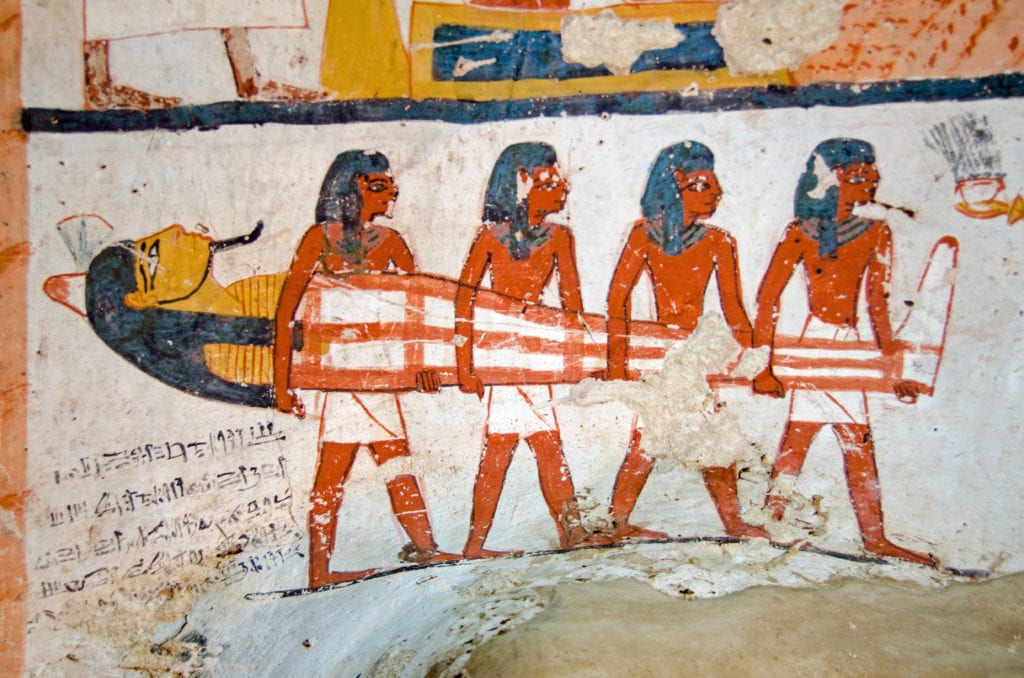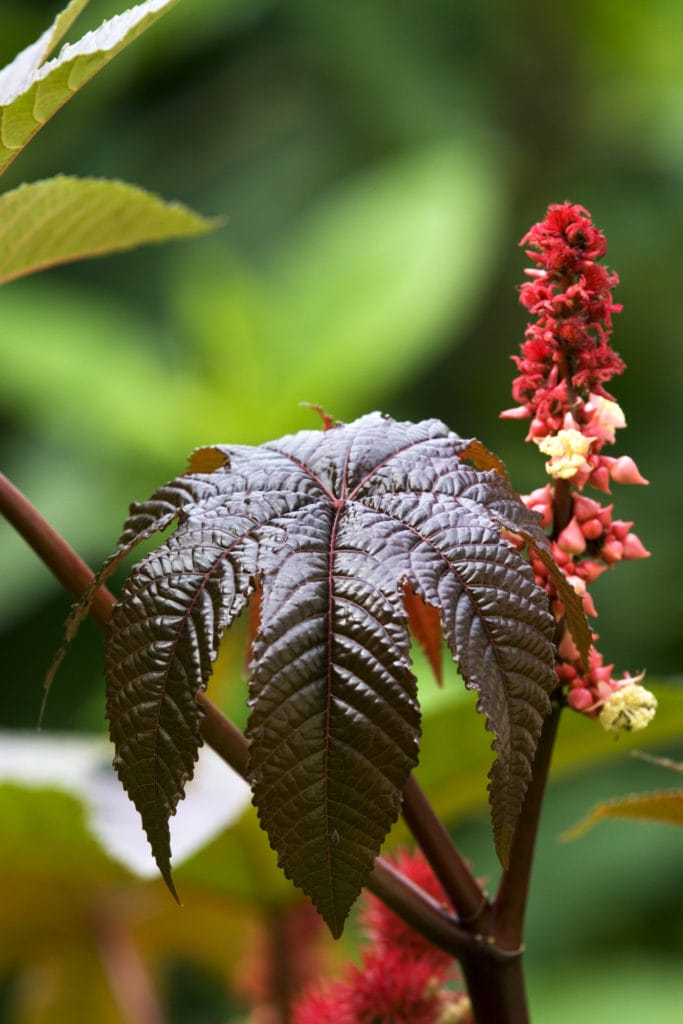I have known about castor oil packs for as long as I can remember, and I’ve used them from time to time. However, I never knew the real story of castor oil—until I encountered in my pile of new but unread health books a bright purple cover with a title that was just too intriguing to put down: The Oil That Heals. I assure you that once you start reading this book by William A. McGarey, MD, you’ll find it hard to stop.
What I discovered was important enough that I felt I had to write a short article about the amazing healing energies of castor oil packs. I hope this information will be highly beneficial to you, and you’ll give them a try. These are fast becoming a daily part of my life, so please read on.
A Brief History of Castor Oil
Native to India, Ricinus communis (castor oil plant) has a long history. It was found in Egyptian tombs dating as far back as 6,000 years ago. Introduced to Greece in the 4th century, castor oil fueled the lamps of the ancient historian Herodotus. It is still cultivated in Greece to this day, as well as parts of Africa and Central America.
By the 18th century, Europeans were using the seeds and oil of the Ricinus plant as an external remedy for skin issues. The Jamaicans, who introduced it to Europe, called it “agnus castus” because the leaves are reminiscent of the palm plant of Christ. To this day, some people still refer to castor oil as Palma Christi. This is Latin for the “palm of Christ,” but it is also translated as the “Healing Touch of God”
Properties and Health Effects of Castor Oil
Quoting from Dr. Vineeta G. Singh et al. in “Ricinus Communis (Palm of Christ) Healing Touch of God”:
“It is a vegetable oil obtained by the seeds of Ricinus communisis, which is the botanical name of the castor oil plant…
“[Its] most popular use has been lowering constipation and boosting the appearance of hair health, & especially used for treating skin infections, but many studies have shown that it has immune boosting properties and is the most important application of castor oil. Castor oil is capable of increasing a type of special white blood cells that act like antibodies as white blood cells and the count of T-11cells produced within the body’s lymphocytes that help kill viruses, fungi, bacteria and cancer cells. Due to its specific compound ricin oleic acid castor oil is considered to be pretty unique because is not found in many other substances [sic].”
The authors of this paper also note six other benefits associated with castor oil:
- Supports the body’s lymphatic system and other immune-enhancing properties.
- Contains polymers that induce bone formation.
- A natural antibacterial, antifungal, and antimicrobial agent that targets underlying causes of skin disorders.
- Absorbs lingering fat molecules within the small intestine.
- Improves blood flow, thymus gland health, and other immune system functions.
- Increases production of natural disease-fighters in the lymphatic system, which then attach to outside invaders such as toxins and bacteria.
Castor Oil Packs and Edgar Cayce
William A. McGarey, MD, was a pioneering holistic health physician who advanced the holistic healing methods of Edgar Cayce. We are fortunate that through the efforts of McGarey, among others, Edgar Cayce’s work has remained in the public spotlight. Cayce became popular for healing sessions in which the primary protocol was castor oil packs.
Edgar Cayce was an illustrious bedside healer who would go into a trance, embody the patient’s energy, and then come to an immediate prescription. This may all sound too “woo-woo” for some people, but more than 1,800 testimonies about his prescriptions have stood the test of time. Castor oil packs were the staple remedy prescribed by Cayce regardless of the type of health issue, which encompassed injuries, gastrointestinal disorders, female disorders, nervous disorders, headaches, and many other serious conditions.
McGarey’s book The Oil That Heals presents numerous testimonies for your reading pleasure. Obviously Cayce had many critics and suffered unjust discrimination. Regardless of the criticism that he and many alternative practitioners faced, we are better off today for their courage in daring to challenge conventional medicine.
Who Else Used Castor Oil Packs?
Castor oil packs are not original to Edgar Cayce. Research shows that castor oil was used in traditional Ayurvedic and Chinese medicine. It was advocated by Hippocrates (the “father of medicine” himself) and by the Greek philosopher Galen. Last but not least, Caribbean and Slavic countries have made great use of this precious oil.
Castor Oil Pack Instructions and Sources
Many of you may know how to make your own castor oil pack, but for those that don’t, here are some clear and concise instructions, including a step-by-step video and downloadable guidelines to keep handy. More information is available on YouTube as well. You can order castor oil under the name Palma Christi or Palma Christos at the Heritage Store, but be aware that it is not labeled organic. An organic brand of castor oil is available directly from BAAR, which sells Cayce products. However, the price difference is substantial. You can also support your local health food store and get it there.
Important note: When ingested, castor oil can be toxic, so be sure to adhere to recommended dosages. I would personally use it as an external therapy with the packs and avoid ingesting it.
[xyz-ihs snippet=”Begin-Authors-Note”]Afterthoughts from the Traditional Cook
A Tribute to Dr. William McGarey
Dr. William A. McGarey (1919–2008) considerably advanced Edgar Cayce’s holistic healing methods. Dr. McGarey, or Dr. Bill as he was fondly called, was widely known through his books and magazine column. With his then wife Gladys McGarey, MD, he cofounded the Association for Research and Enlightenment (ARE) Clinic in Phoenix, AZ. He practiced family medicine for some 40 years and advocated Cayce’s healing principles through his writing and private consulting. He also published a dozen books, notably The Edgar Cayce Remedies, The Oil That Heals, and Edgar Cayce on Healing Foods. His magazine column appeared in Venture Inward for 22 years. As director of the medical research division of the ARE Clinic, he wrote The Medical Research Bulletin, an information service for the medical profession, from August 1970 until 1986. Born in Wellsville, Ohio, in 1919, he went on to graduate from the University of Cincinnati Medical School. He was also a veteran of World War II and a flight surgeon during the Korean War.
Thank you for reading and sharing this important blog post.
—Maria Atwood, CNHP
Disclaimer from Maria Atwood, CNHP: I am a Certified Natural Health Professional, CNHP, not a medical doctor. I do not diagnose, prescribe for, treat, or claim to prevent, mitigate, or cure any human diseases. Please see your medical doctor or health practitioner prior to following any recommendations I make in my blog posts or on my website.
[xyz-ihs snippet=”End-Authors-Note”]Images from iStock/Leyn (main), AmandaLewis (Egyptian Mural), Prensis (castor oil plant).





